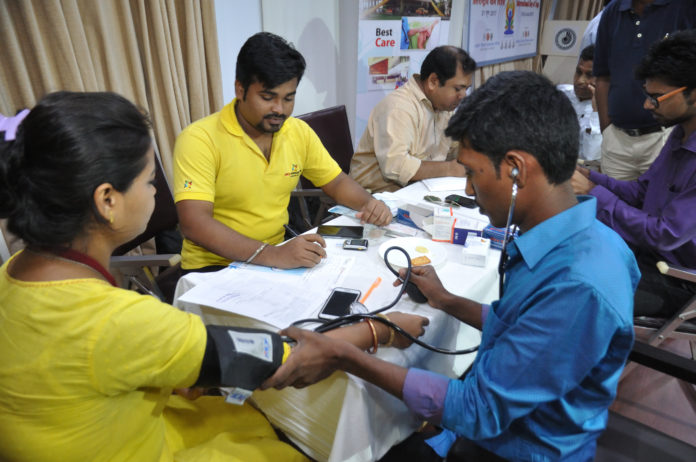
Community health workers can reduce hospitalisations by 65 percent and double patient satisfaction with primary care
As India embarks on an ambitious tertiery care plan under Ayushman Bharat, a new study shows that community health workers are the key to the success of such a programme.
India has community health workers such as ASHAs, auxiliary nurse midwives and Anganwadi workers but they do not have a defined role in Pradhan Mantri Jan Arogya Yojana that will provide an annual health cover of about $8000 to 500 million people.
Community health workers are selected from people of local communities who also help chronically ill patients on social issues like food and housing insecurity. They can help reduce hospital stays by 65 percent and double the rate of patient satisfaction with primary care, according to new study published in JAMA Internal Medicine.
The study, conducted by researchers in the Perelman School of Medicine at the University of Pennsylvania, focused on chronically-ill low-income patients and U.S. veterans.
“It’s remarkable that these results were achieved not by an expensive drug or technology, but from good old-fashioned social support.”
“Improving health quality while lowering costly hospitalizations is what so many health care leaders are trying to achieve,” said lead author Shreya Kangovi, MD, MS, an assistant professor of Medicine and founding executive director of the Penn Center for Community Health Workers.
“It’s remarkable that these results were achieved not by an expensive drug or technology, but from good old-fashioned social support,” Kangovi added.
The Penn team developed IMPaCT (Individualized Management for Patient-Centered Targets), a community health worker model, a highly standardized and scalable model. In this study, 600 patients were randomly assigned to receive standard primary care or six months of support from an IMPaCT community health worker plus standard primary care. Participants were residents of eight high-poverty zip codes in Philadelphia, PA, who had received a diagnosis of two or more targeted chronic diseases (diabetes, obesity, tobacco dependence, and hypertension), at least one of which was in poor control.
Between January 2015 and March 2016, 288 patients were assigned to usual primary care, while 304 patients were assigned to receive community health worker support. The community health worker-supported group received six months of hands-on, tailored support that included coaching, social support, advocacy, and health care navigation.
Compared to patients in the typical primary care group, those who received community health worker support were nearly twice as likely to report high-quality primary care, and spent fewer total days in the hospital at six months (155 days vs. 345 days) and at nine months (300 days vs. 471 days).
Patients receiving community health worker support also had lower rates of repeat hospitalizations, including 30-day readmissions.












